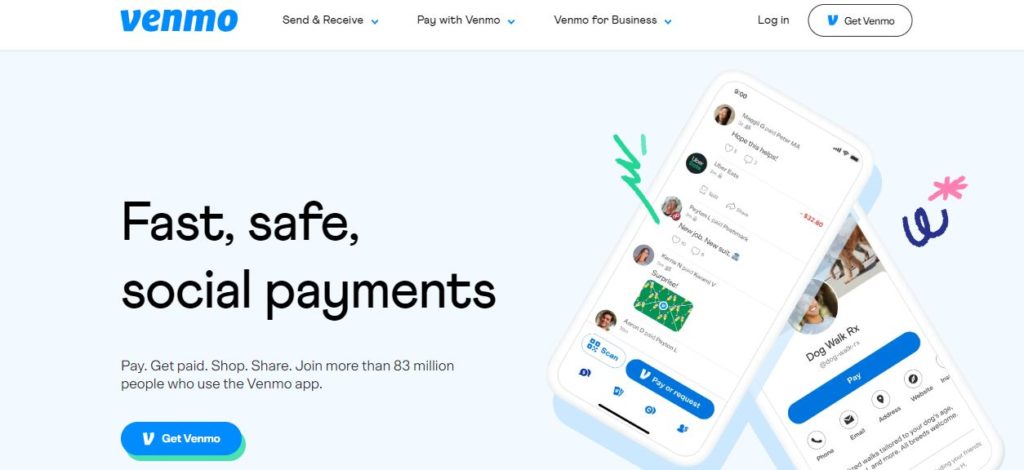The Venmo app, which allows users to transfer money to one another’s bank accounts using their phones quickly, has gained recognition from many IT businesses in recent years.
Although users of the app do not have to pay any fees for sending or receiving money, they make money by various methods, including interchange and withdrawal fees as well as Cash a Check and Cashback program fees.
We will be discussing how Venmo makes its income in this article. Keep reading!
What Is Venmo & How does it Work?

Venmo, a peer to-peer money transfer program, allows users to instantly send money to friends, families, and businesses. In 2009, the company was created to allow customers to send and receive SMS money. The business was purchased by PayPal in 2013. It has since evolved into an online platform that can process various types of payments including merchant services and personal transfers. The software’s sole purpose is to be used on mobile devices and does not allow for online account management.
Is Venmo profitable?
Venmo’s transaction fees for businesses are 2.9 percent. Venmo is accepted by more than 2 million US businesses. Venmo users who want to withdraw funds to their linked card will be subject to a 1 percent fee. Withdrawals typically take between one and two days.
It generated an $850m in revenue in 2021 and processed $230billion in transactions. Every peer-to-peer transaction on Venmo is published by default (apart from the amount), a feature that academics have proved to occasionally disclose private information about users’ lives.
Venmo Model for Business
Venmo’s business model relies on merchants and app users collecting fees. Customers are not charged for using Venmo’s direct peer-to-peer money transfer services. The business earns its revenue through affiliate relationships, check-cashing, interchange and withdrawal fees. Venmo also offers debit and credit cards via partnerships with Mastercard, Visa. This allows Venmo to recover interchange fees paid by businesses accepting these cards.
Venmo’s main competitors are PayPal and Zelle. Zelle is a direct money transfer service customers can use to send money to their friends and family electronically. Zelle has a wide range of transaction options, but is not as popular as PayPal.
What is Venmo’s Secret to Making Money?
Venmo Pays
Venmo customers can make payments at specific merchant partners using their Venmo account, through the Pay With Venmo functionality. Partner companies include Foot Locker and Forever 21 Urban Outfitters.
When customers make a purchase at any of these merchants, a charge will be added to their order. Venmo is $0.10 each for every transaction, plus 1.9 Percent.
Interchange & Withdrawal Fees
Venmo will charge businesses interchange fees for consumers who use Venmo Credit Cards to conduct transactions. Customers also pay interest when they purchase credit cards. The transaction amount is deducted from the total charge.
Venmo users who need immediate cash access can use a Venmo debit card to withdraw cash at any ATM. Withdrawing money with a debit card is subject to a $3.00 fee over-the-counter and $2.50 per domestic withdrawal.
Charges for Cryptocurrency
Venmo has made it possible for you to trade and buy cryptocurrency starting June 2021.
Four currencies are now available for customers in America: Bitcoin Cash, Ethereum Cash, Bitcoin Cash and Litecoin.
Venmo makes revenue through its cryptocurrency offerings via transaction and spread fees.
Spread is the difference in market prices Venmo pays to its trading partner Paxos, and the exchange rates shown to users between US dollars or the crypto asset.
The spread is influenced by market factors like the US dollar’s strength. Venmo also charges a transaction charge for every buy and sell.
Venmo’s costs are often comparable to those of well-known cryptocurrency exchanges like Binance or FTX.
Instant Transfers
Venmo users can transfer money instantly from Venmo to their bank accounts using Venmo Instant transfers, which was introduced in 2019. Venmo Instant Transfer funds can be transferred to your bank account in 30 minutes, instead of the usual one to three days.
Venmo makes revenue via Instant Transfers by charging 1.5 percent of each amount sent. A minimum $0.25 fast transfer fee is charged and maximum $15 per transfer. You can still use standard electronic withdrawals for free.
Cash A Check
Users may cash their wages and government stimulus cheques using one of Venmo’s newest services, Cash-a-Check. Venmo charges 1% for payroll, government checks, and 5% for any other bills. Review must not exceed $5 and no more than 5K. To use the service, users must have an active Venmo Debit Card or email address.
Cashback
Venmo credit and debit cardholders can get cashback when they use their cards to purchase at certain retailers. Venmo offers a discount via Dosh to encourage cardholders not to shop at other stores. Venmo receives a referral commission based upon the number of transactions made and terms of the partnership.
Summary
Venmo is a money-transfer service that PayPal controls. PayPal charges additional fees for services like ATM withdrawals and credit-card settlement. The company also offers a free mobile app for users to send and receive cash to each other or to businesses. More income is earned through referrals, credit card interest and purchases of cryptocurrency.
This is the post: How Venmo Makes Money. Entrepreneurship Life was first to publish this article.
